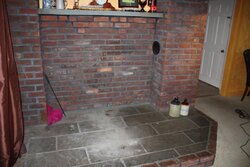I just sold an old Warner stove which was way too big for me in a house I recently bought. Going to replace it with a Jotul. The granite underneath the stove is discolored and I assume it was from the heat as it is in the outline of the old stove. The Jotul is not all long and the discoloring will show. Anyone have any suggestions as to what might brighten the discoloring up? Thanks for any suggestions.
Hearth Discoloring
- Thread starter kevinwburke
- Start date
-
Active since 1995, Hearth.com is THE place on the internet for free information and advice about wood stoves, pellet stoves and other energy saving equipment.
We strive to provide opinions, articles, discussions and history related to Hearth Products and in a more general sense, energy issues.
We promote the EFFICIENT, RESPONSIBLE, CLEAN and SAFE use of all fuels, whether renewable or fossil.


